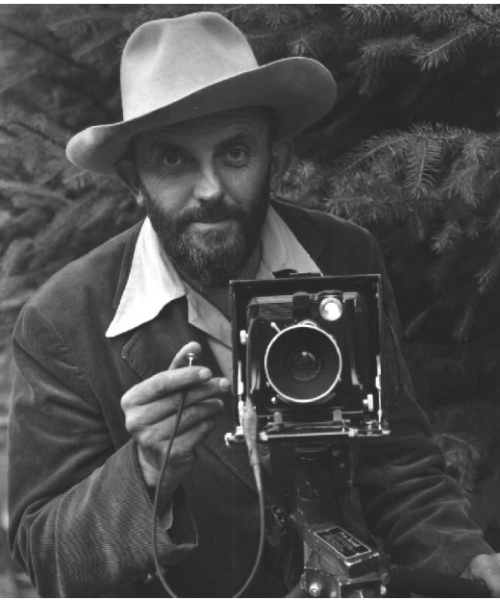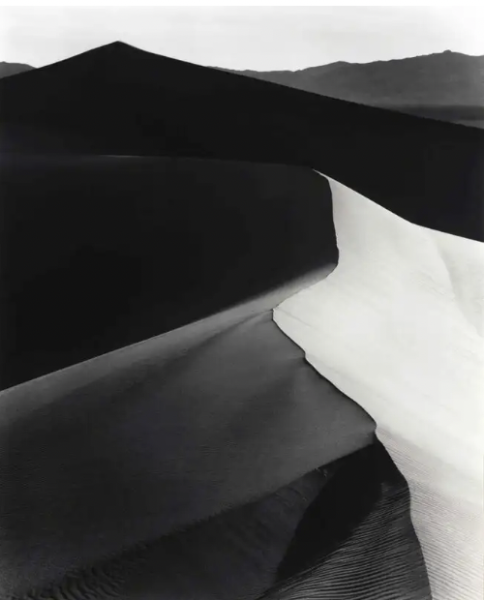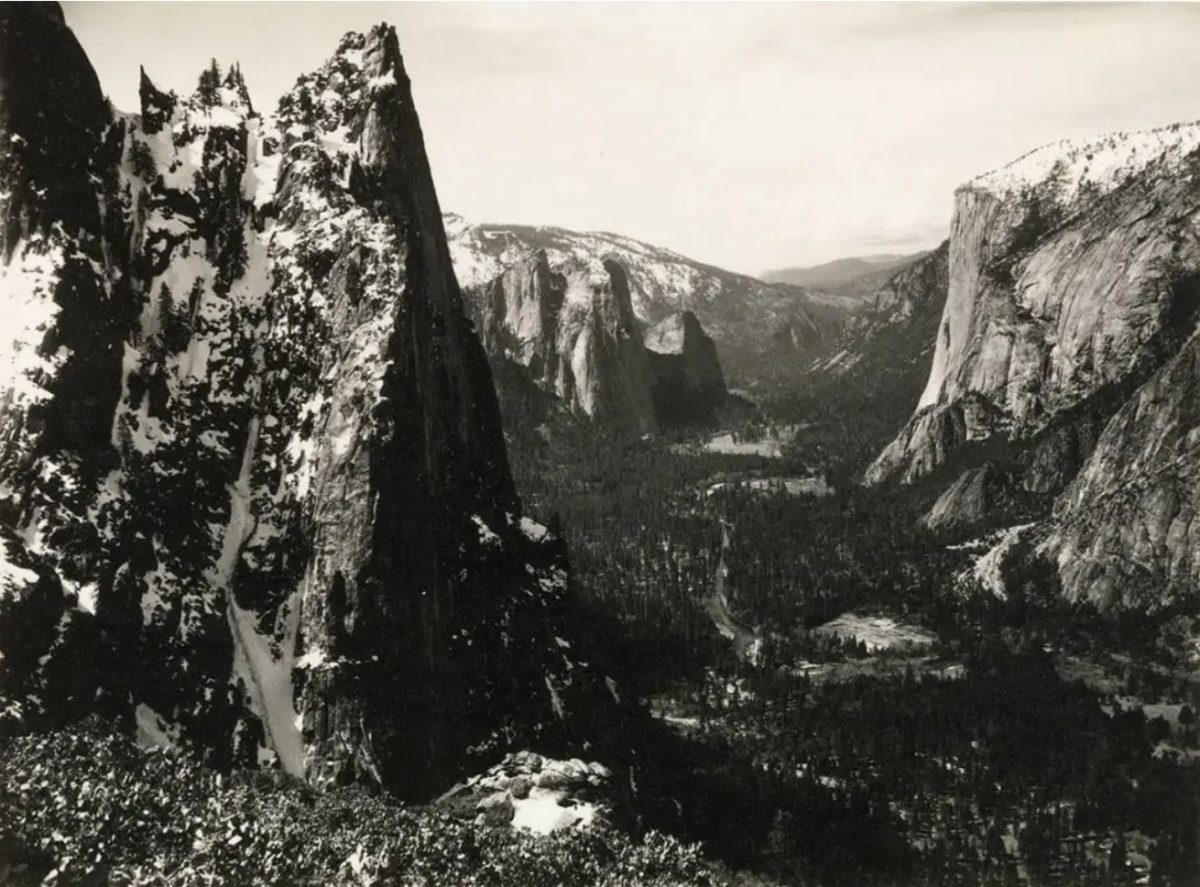
Ansel Adams is one of the most well-known photographers in the world. Born on February 20, 1902, Adams grew up in San Francisco by the Golden Gate. At the age of 12, his parents decided to take him out of public school and began his homeschooling. Soon after, Adams’s father bought a year’s pass to the Panama-Pacific Exposition, a fair held in San Francisco to promote technological and motor advancements at the time. There, Adams would wander around the fair almost every day, taking photographs of the fair and the Golden Gate area with his Brownie box camera that he later assembled in albums and called them his “photo-diaries.” He eventually had his first visit to Yosemite National Park—his first exposure and newfound fascination with the natural landscape. This is where his story begins.
Quote: “That first impression of the valley—white water, azaleas, cool fir caverns, tall pines and stolid oaks, cliffs rising to undreamed-of heights, the poignant sounds and smells of the Sierra…was a culmination of experience so intense as to be almost painful. From that day in 1916 my life has been colored and modulated by the great earth gesture of the Sierra.” –Ansel Adams, recounting his first encounter of the Sierra Nevada
His Photography and Purpose
As an environmentalist, Adams’s photographs capture the natural beauty of America’s lands, from domes to waterfalls, which draws awareness to preserving the country’s natural essence. His works have set a reminder to protect landscapes and served as a passage to nature photography being included in the art world.

Adams goes for a more realist style rather than a pictorialist style, in a sense that he wants to capture the scenery as they appear to be. Thus, he formed “Group f/64,” denoting the smallest aperture setting of a larger camera that gives high-quality resolution and depth of field. Among this group were other renowned photographers such as Imogen Cunningham, Edward Weston, and Sonya Noskowiak. This was an association of West Coast photographers who favored the use of sharp focus and the photographic gray scale (a range of gray shades seen in monochrome prints). But prominently, they advocated for straight photography that documents and records life as it is, in an unmanipulated and “pure” manner—basically, photography that looks more like photographs than paintings. Hence, this association served as a revolt against Pictorialism, a total contrast that softens realism and emphasizes the beauty, tonality, and composition of the subject matter.
Quote: “Such prints retain most of the original negative quality. Subterfuge becomes impossible. Every defect is exposed, all weakness equally with strength. I want the sharp beauty a lens can so exactly render.” –Edward Weston, voicing his preference for sharply focused, realistic photographs
Adams, along with Fred Archer, also created a photographic technique, called the Zone System, that is still prevalent in modern films and digital captures. Ranging from zone 0 (pure black, with no detail) to zone 10 (pure white, with no detail), this technique aimed to help photographers determine the optimal film exposure and development time. It helps to appreciate and understand the tone range and relationships in one’s photographs.
Influence of Realism

Adams’s works have sparked a major influence among many photographers and changed the views on nature of many Americans. Photographers like Dorothea Lange and Walker Evans have taken photos that document American life, especially the ones that reveal the raw emotions, struggles, and stories of Americans during the Great Depression—a subject that they have both focused on. It is evident to see that their works centered on capturing the world around them and letting the subjects reveal themselves, which is great for those who advocate for social change. Adding on to that, Adams’s photographs of the landscapes in national parks have left others in wonder and awe, which leaves them to realize the significance of protecting the natural beauty of our lands that is often overlooked. This was his devotion—to draw support and call to action to preserve our country’s remaining lands of untouched wilderness.
Conclusion
Through his advocacy and iconic, realist photographs, Adams has left a revolutionary influence among both photographers and environmentalists alike. His acclaimed photographs of the Sierra Nevada serve as his tribute to its undeniable beauty and contribute to the conservation movement. He was a long-time member of the Sierra Club, an American environmental organization that aims to protect and restore the natural and human environment, in which he became an outspoken leader for environmental activism by lobbying political leaders, including Presidents, and suggesting proposals to improve national parks and the wilderness; therefore, he earned the title “artist and defender of Yosemite.” His pioneering works in the world of photography and environmentalism have left a lasting legacy that continues to inspire photographers and environmentalists around the world.
Quote: “I knew my destiny when I first experienced Yosemite”–Ansel Adams, in his autobiography, pg. 67




